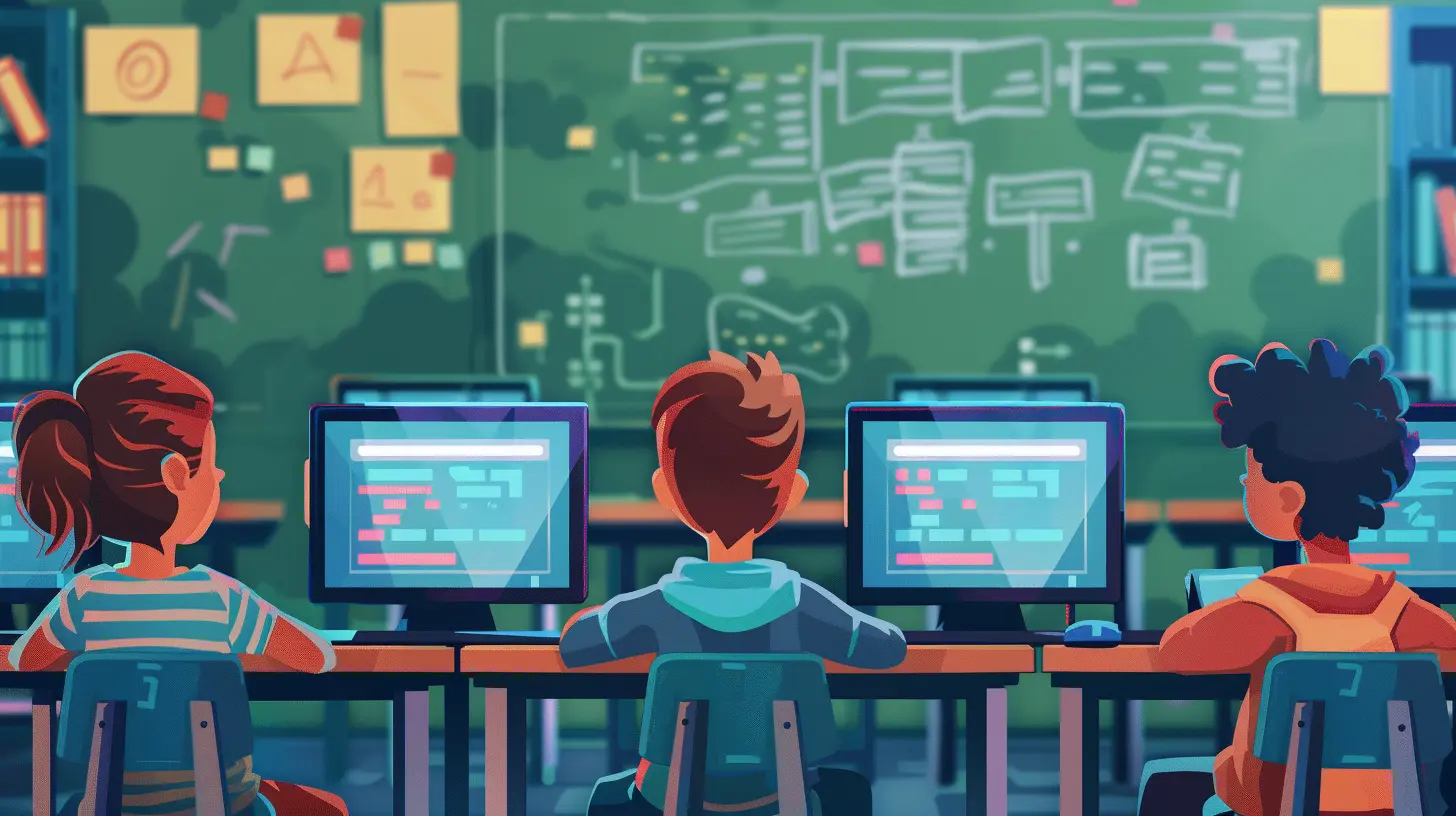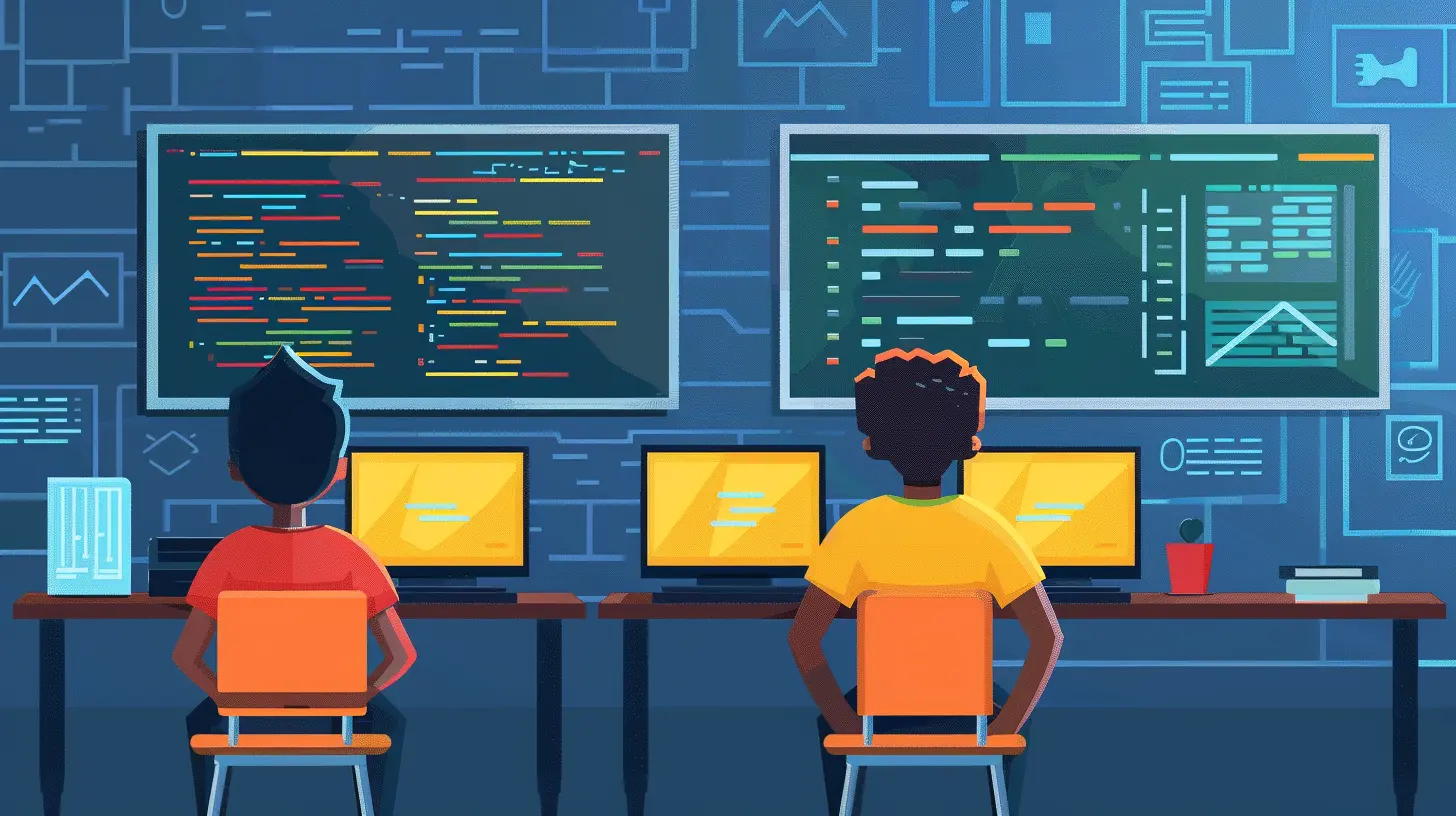30 July 2025
In an age where screens dominate our lives, it might sound strange to talk about teaching coding without a computer. But guess what? Not only is it possible, it’s also incredibly effective—especially for younger students or beginners. Whether you're a teacher, parent, or homeschooler, unplugged coding activities offer a fun and refreshing way to introduce the logic and thinking behind coding without needing any fancy tech.
Let’s dive into how you can teach coding without computers and why you might actually want to.
Why Teach Coding Without a Computer?
Before we jump into the activities, let’s clear something up: You don’t need a screen to teach how a computer works. Coding isn't just typing commands into a computer—it's a way of thinking. We're talking about problem-solving, pattern recognition, sequencing, logic, and algorithms.So, why go unplugged?
1. Builds Core Computational Thinking
Unplugged activities help students develop computational thinking—breaking problems into smaller parts, spotting patterns, giving precise instructions, and thinking step by step.2. Makes Coding More Accessible
Not all classrooms have the privilege of having rows of shiny laptops or consistent internet access. These unplugged strategies can step in as equalizers.3. Reduces Screen Time
Let’s be honest, students already spend hours staring at screens. Unplugged coding gives them a break without losing the learning.4. Engages Different Learning Styles
Some kids learn best through physical movement. Others through storytelling. Unplugged activities come in all shapes and forms—matching all kinds of learners.
What Are Unplugged Coding Activities?
Unplugged coding activities are lessons and games that teach the principles of computer science without using digital devices. This could mean drawing mazes, playing board games, doing role-plays, or creating paper algorithms.They can be fun, super interactive, and honestly, a refreshing twist for both teachers and students.
Key Concepts You Can Teach Without a Computer
You don’t need a keyboard and screen to cover the basics. These unplugged methods can teach:- Algorithms: Step-by-step instructions.
- Sequencing: Putting steps in the right order.
- Loops: Repeating steps to make things efficient.
- Conditionals: "If this, then that" logic.
- Debugging: Finding and fixing problems.
Sounds like real coding, right? It is!
Top Unplugged Coding Activities for the Classroom
Ready to unplug? Here are some creative, classroom-tested activities to get you started.1. Robot Turtles (The Human Version)
This one’s a hit with younger students.What You Need: A simple grid on the floor (painter's tape works), paper arrows, and a "robot" (a student).
How It Works: One student becomes the programmer, the other the robot. The programmer gives step-by-step instructions—like turn right, move forward—to the robot to navigate them through a maze.
What It Teaches: Sequencing, directional commands, debugging.
🎯Tip: Let students "program" their classmates with physical cards. If the robot crashes into a wall, time to debug!
2. Algorithm Scavenger Hunt
What You Need: Small items, clue cards, and a willingness to get creative.How It Works: Set up a scavenger hunt where students write or follow algorithms (directions) to find objects around the room.
For example:
1. Take three steps forward.
2. Turn right.
3. If you see the red book, take it.
What It Teaches: Algorithms, sequencing, conditionals.
🎯Bonus: Let older students write algorithms for their classmates to follow. It can get hilarious (in a good way) when the instructions go slightly wrong. Debug away!
3. Cup Stack Coding
What You Need: Plastic cups and simple instruction cards (move left, move right, stack, pick up, etc.)How It Works: Students take turns being programmers or robots. The goal is to give the robot the right sequence of commands to stack cups in a certain pattern.
What It Teaches: Precise instructions, loops, problem-solving.
🎯Challenge Idea: Introduce a "loop" card if students have to repeat a set of moves.
4. Binary Bracelets
What You Need: Beads in two colors and string.How It Works: Teach kids about binary by assigning 0s and 1s to the colors. Then have them "code" their initials or favorite numbers using binary code and turn them into wearable art.
What It Teaches: Binary number system, data representation.
🎯Bonus: It’s a perfect combination of STEM and art—STEAM for the win!
5. Paper Programming Storyboards
What You Need: Paper, pens, and imagination.How It Works: Students create a storyboard where each panel is a step in an algorithm. It could be brushing teeth, tying shoelaces, or baking a cake.
What It Teaches: Algorithms, decomposition, sequencing.
🎯Pro Tip: This activity pairs beautifully with language arts and writing.
6. Debugging Detective Game
What You Need: Pre-made "buggy" sequences or stories.How It Works: Give students a step-by-step process with one or two intentional mistakes. Their job is to spot and fix them—like coding detectives!
What It Teaches: Debugging, logical thinking.
🎯Make it competitive with teams and points for each bug located and fixed.
Integrating Unplugged Coding Into Your Curriculum
Here’s the best part: You don’t need to carve out a separate “coding time” during the week. These activities can be integrated into subjects you already teach.Math Integration
- Use sorting and pattern recognition to connect with early math concepts.- Algorithms can tie into word problems.
Language Arts
- Sequence stories or plan writing with step-by-step “algorithms.”- Identify "if/then" statements in narratives—perfect for conditionals!
Science
- Model scientific processes (like the water cycle) with coding steps.- Create a "program" for photosynthesis or animal classification.
When you start seeing the connections, you'll realize coding is just another language. One that applies to pretty much everything.
Tips for Making Unplugged Coding Fun and Effective
Before you jump in with both feet, keep these teacher-tested tips in mind:1. Keep it Hands-On
Make the activities tactile. Use blocks, paper, cards, or even student movement. The more physical, the better.2. Encourage Collaboration
Let students work in pairs or groups. Coding is rarely a solo activity in the real world, so teamwork is key.3. Ask Reflective Questions
After an activity, ask:- What worked?
- What didn’t?
- What would you do differently next time?
Reflection solidifies learning.
4. Vary the Activities
Just like coding, unplugged lessons should scale with age and ability. Start simple. Add complexity as confidence grows.Common Challenges (and How to Handle Them)
Let’s talk real world: No lesson plan is perfect. Here are a few issues you might run into—and how to handle them.“This isn’t real coding!”
Students (and sometimes adults) might doubt the validity of unplugged coding. Remind them that the logic and structure they’re learning mirrors what real coders use daily.Short Attention Spans
If students start drifting, switch roles or add a story element. Make them a “tech explorer,” “bug detective,” or “robot trainer.”Difficulty Debugging
Debugging is hard. That’s okay. Ask guiding questions rather than giving answers. Let them puzzle it out.Final Thoughts
Teaching coding without a computer might seem backward, but sometimes stepping away from the screen is the best way to understand what's really going on behind it. These unplugged activities lay a strong foundation for coding fluency—without needing power, Wi-Fi, or even a keyboard.So next time you're looking to get your students thinking like programmers, don’t reach for the tablet. Reach for some tape, paper, blocks, beads, or even just your imagination.
You’ll be amazed by how much they can learn without ever touching a screen.








Megan Monroe
Great insights! Unplugged activities make coding accessible to all.
November 27, 2025 at 12:55 PM